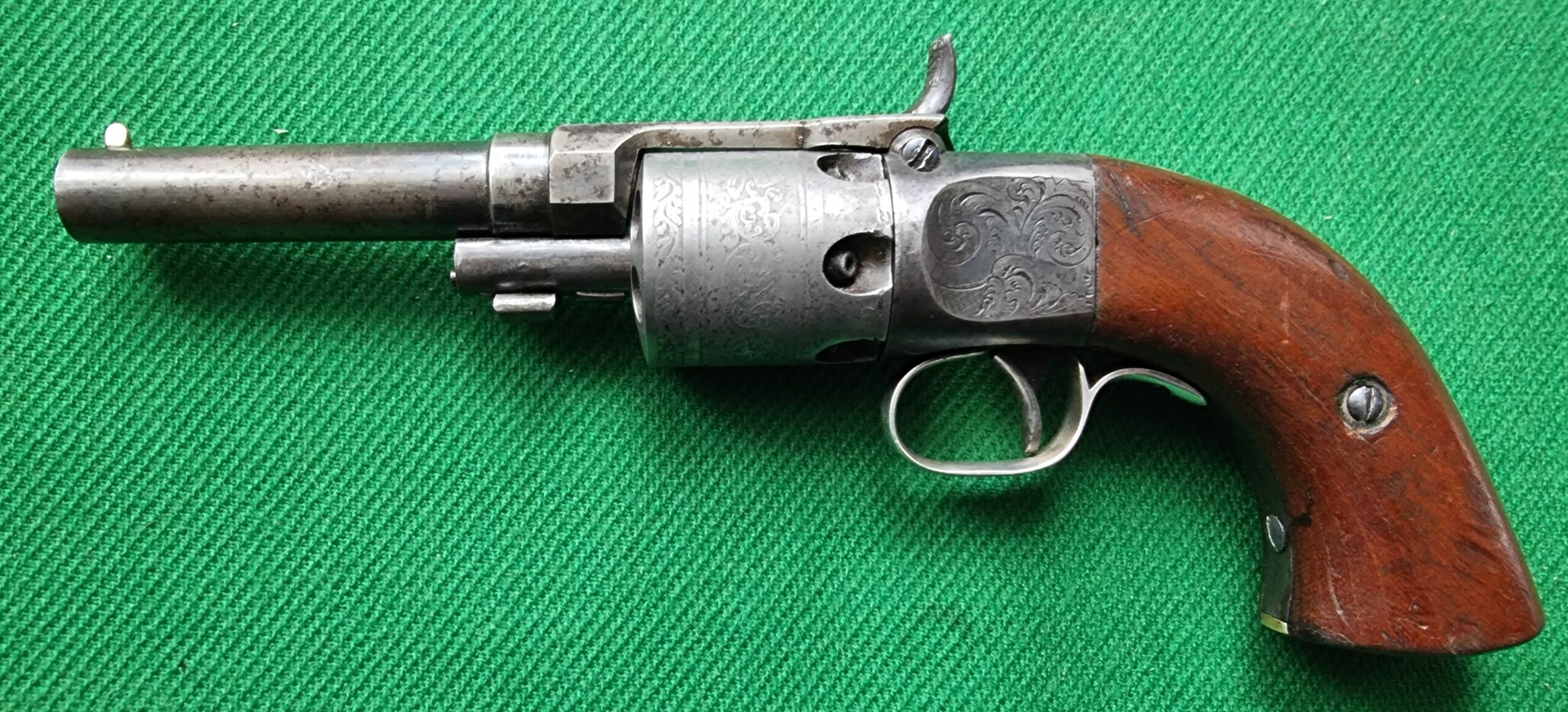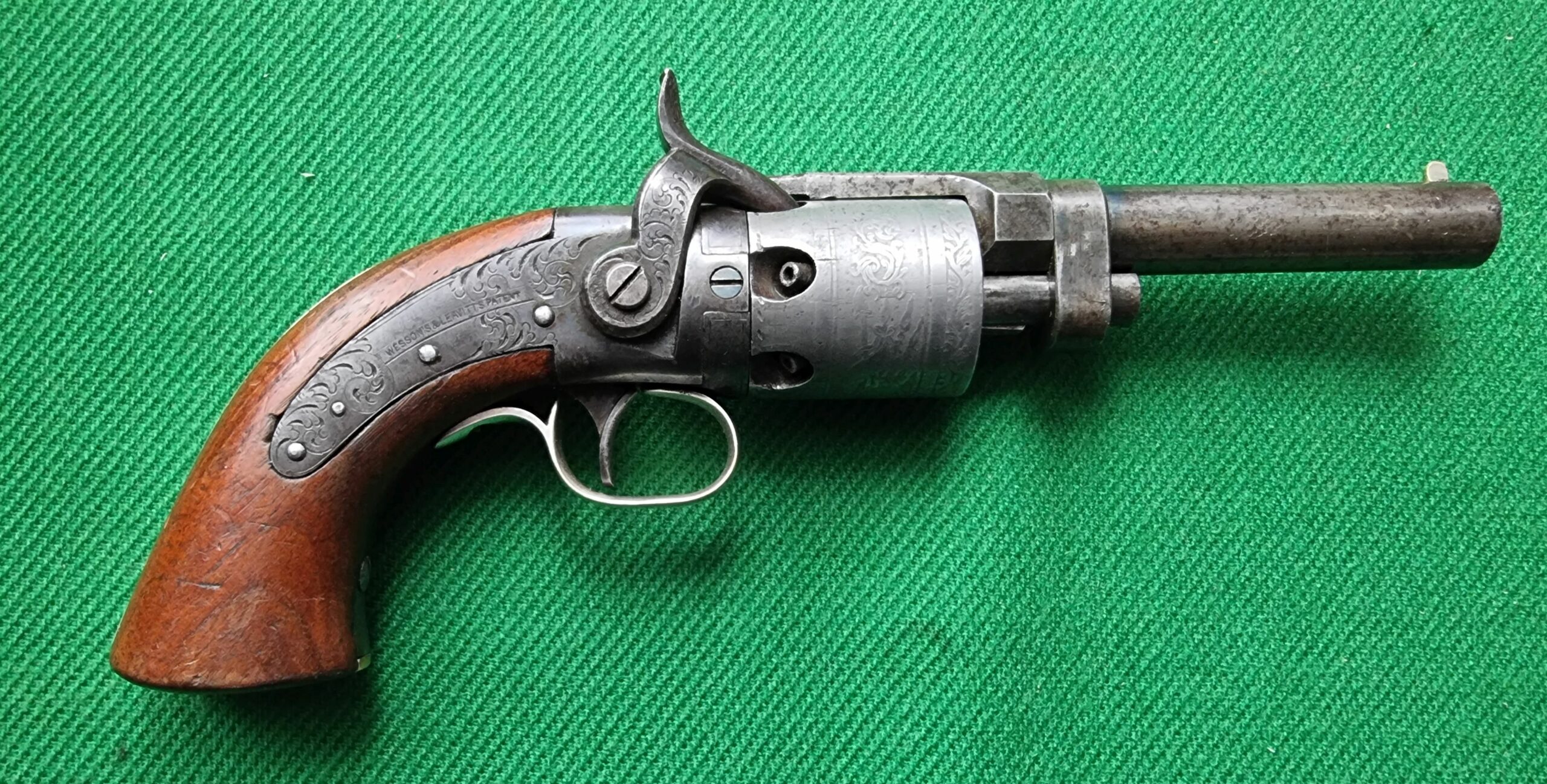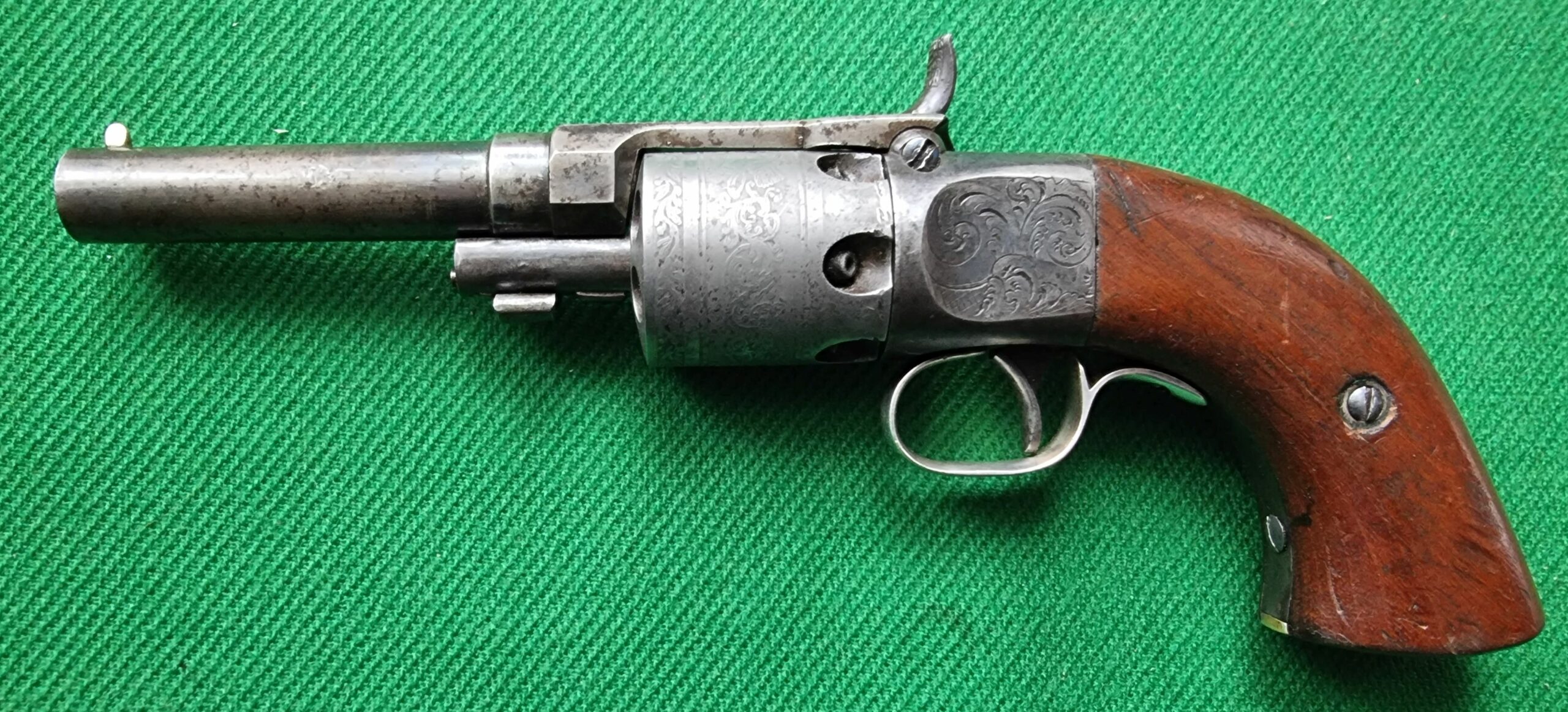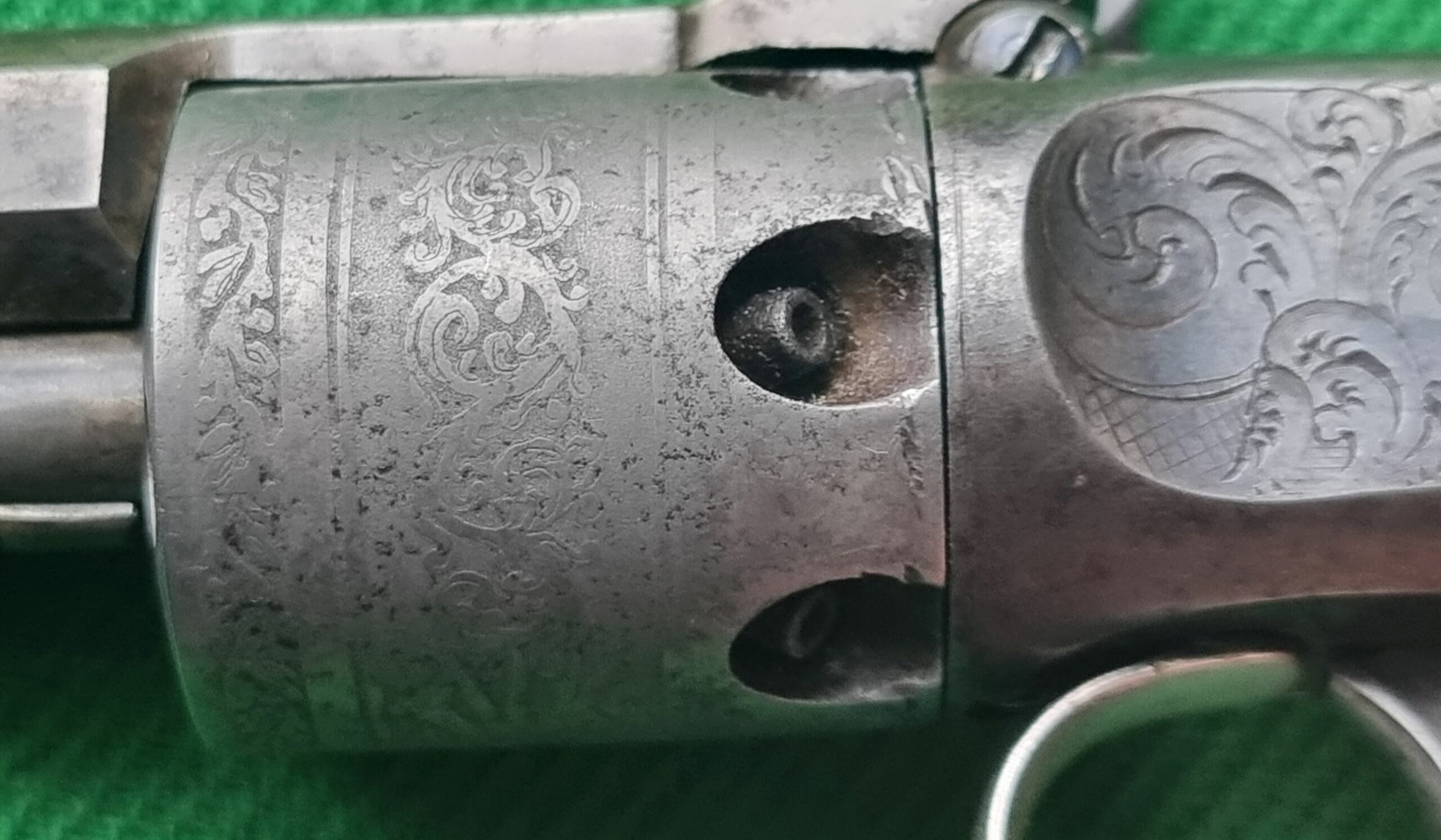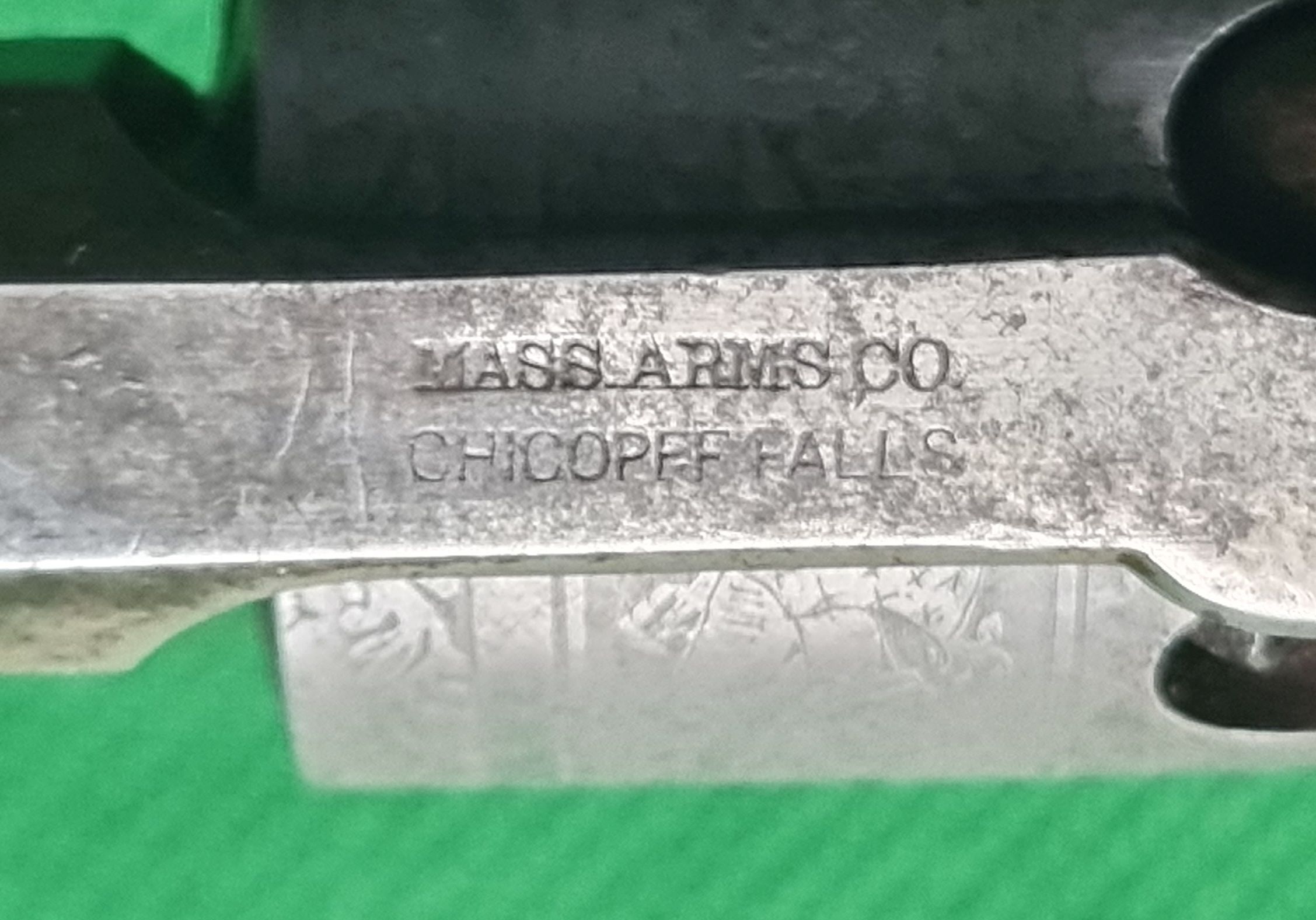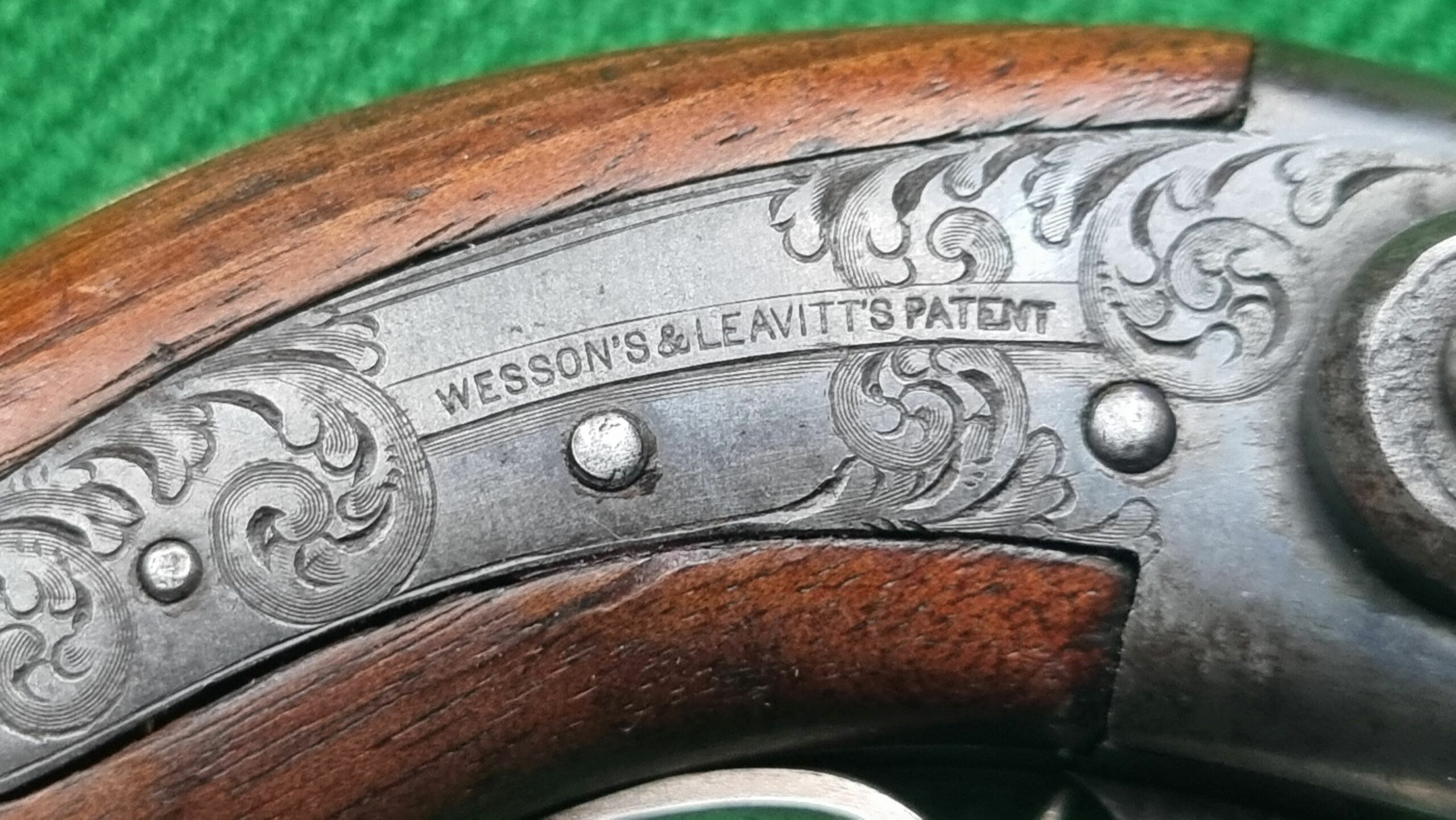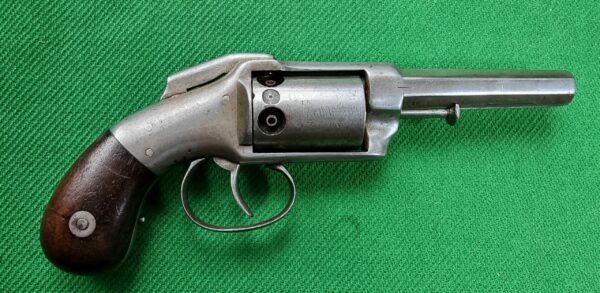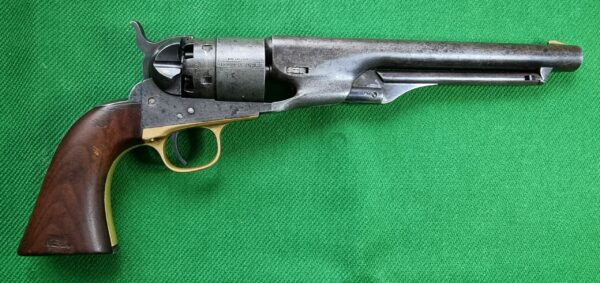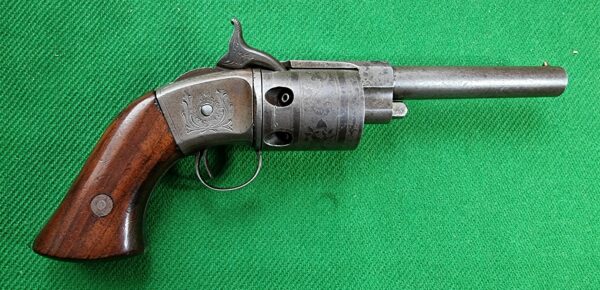Wesson and Leavitt belt revolver
Description
6 shot Wesson and Leavitt belt revolver. The frame open, but downwards. Common sense suggests, that this designs hold the barrel much more stable against bullet force than upward open frame.
This is a lovely example of an early Massachusetts Arms Company Wesson & Leavitt Belt Revolver. Although much better known for their later production Adams Patent revolvers and various military carbines like the Greene, Maynard, Smith and Warner, their early production pistols are by far some of the most interesting guns that they produced. The Mass Arms Company was formed in Chicopee Falls, MA in 1849 and was incorporated in 1850. It counted among its incorporators such later luminaries in firearms history as Horace Smith and Daniel Wesson (who would later found Smith & Wesson), Joshua Stevens (later to start the J. Stevens Arms Company), gun designers Edwin Wesson and Benjamin F Warner (of Warner Carbine fame). James T. Ames of the famous Ames Manufacturing Company was also one of the original incorporators, and served as the Chairman of the Mass Arms board of directors, as well as providing factory space at Ames for the initial production of Mass Arms firearms. The first arms produced by Mass Arms were percussion revolvers designed by Edwin Wesson (brother of Daniel Wesson) and Thomas Warner (who was the factory superintendent). The revolvers were produced under patents held by Wesson and Daniel Leavitt. The first guns produced in 1850 were the larger “Dragoon” sized revolvers in .40 caliber. Later in 1850, the firm introduced a “Belt” size revolver in .31 caliber. Both revolvers utilized side-mounted, back action locks that operated in a “single action” fashion. They had a hinged top strap that connected the barrel to the rear portion of the frame, which contained the lockwork. The barrel was held in a stationary and locked position by a swinging latch that secured the topstrap to the forward portion of the cylinder arbor pin. The guns had six shot cylinders with convex beveled fronts, and oval cutouts for the percussion cones, which entered the chambers at about a 30-degree angle. The coking action of the hammer rotated a back plate in the frame of the revolver. This back plate rotated the cylinder by way of a pin, which extended from the plate and engaged a hole on the rear face of the cylinder. A second, smaller pin would move in and out of the frame, engaging smaller holes on the rear of the cylinder that corresponded to each chamber, allowing for accurate indexing and lock up of the cylinder. The guns were manufactured with round blued barrels, case hardened frames and brass back straps and trigger guards, which were silver-plated. During the brief production run (1850-1851) of Wesson & Leavitt revolvers, Mass Arms produced about 800 of the larger Dragoon revolvers and approximately 1,000 of the Belt revolvers. Production was ended during 1851 due to a successful patent infringement lawsuit that was filed by Samuel Colt. Colt’s suit noted that the Mass Arms revolver violated his patent on a mechanism that revolved the cylinder when the hammer was cocked. IN order to stay in business, Mass Arms redesigned their revolvers to use a manually revolved cylinder and Dr. Edwin Maynard’s automatic tape priming system. The guns did not sell well and Mass Arms teetered on the brink of disaster until the expiration of the Colt patents and Mass Arms introduced their Adams patent revolvers in 1857.
The Massachusetts Arms Company Wesson & Leavitt Belt Revolver offered here is in about VERY GOOD overall condition. This scarce Belt sized revolver is a 6-shot, .31 caliber pistol with a 3 3/8” long round barrel and an overall length of about 9 “. The revolver is clearly marked in one line on the rear of the back action lock: WESSON & LEAVITT’s PATENT and on the top strap in two lines: MASS ARMS CO / CHICOPEE FALLS. The cylinder rotating plate in the frame is marked WESSON’s PATENT AUG 28, 1849, and the front of the recoil shield is marked with the serial number 782. The rear of the cylinder is marked LEAVITT’s PATENT APRIL 29, 1837. The cylinder arbor pin is marked with the assembly number or mark 3 and the locking stud on the bottom of the barrel, which engages a slot in the forward portion of the cylinder arbor pin, is marked 618. It is not clear if this is a mismatched serial number or another assembly mark. Any references that discuss the serial numbering of these revolvers only refer to a serial number on the frame, and not on any other parts. The frame of the revolver retains some light traces of the original case hardened finish, with a smoky gray color and some scattered, mottled patches of darker gray. The blued barrel retains only light traces of blue in protected areas, with the balance of the barrel showing a medium gun metal gray color, with some light scattered patches of minor scattered peppering and pinpricking and a thinly oxidized brown patina appearing in patches along the barrel. The bore of revolver is in about VERY GOOD condition, and shows strong rifling, with scattered light pitting along the entire length of the bore. The lock plate shows crisp, attractive engraving in loose floral motifs. Floral engraving of the same style is present on the hammer as well. The gun is mechanically excellent and functions perfectly with excellent timing and lock up. The cylinder is acid etched with both floral motifs and panoplies of arms. The etching is crisp and strong, and the cylinder retains about 95%+ of the scene. The cylinder has the same smoky pewter-gray patina as the rest of the gun. The brass back strap retains about 85%+ of the original silver plated finish, with the majority of the wear along the sharp edges. The silver plating has a nice, untouched and deeply tarnished appearance. The brass trigger guard only retains about 20%-30% of the silver plated finish, mostly on the inside of the trigger guard. The balance of the trigger guard brass has a medium butterscotch patina. The smooth walnut grips are in about VERY GOOD condition. They retain the majority of their original oiled finish. They are free of breaks, cracks or repairs. They do show one small chip missing from the leading edge of the left grip panel. The chip is very old, likely from the period of use, as it is worn quite smooth. Other than this one chip, the grips show only some scattered minor bumps and dings from handling and use.Overall this is a really attractive example of a relatively scarce pre-Civil War percussion revolver. These guns were produced in limited numbers and were some of the first somewhat successful percussion revolvers sold in the US. The gun is really attractive and displays very well. The cylinder scene is excellent and all the markings are crisp and sharp. For any collector of Civil War era percussion revolvers, this would be a nice addition to their collection. The revolver would also be a great addition to a collection of early Smith & Wesson revolvers, as the gun was produced by the founders of Smith & Wesson, prior to the establishment of that firm. This is simply a very nice condition example of a scarce pocket revolver from the early days of American revolver manufacturing.
